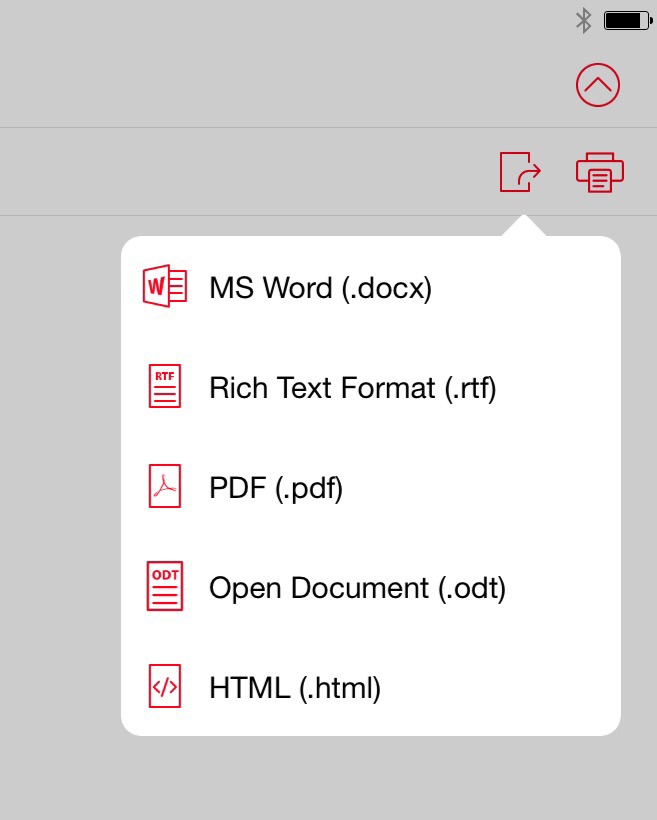Patching the RTF Hole in Ulysses
I recently wrote about how the Ulysses app removed RTF support in favor of DOCX. Overall this opened up file compatibility options with a wide range of apps. I’ve been mostly happy with the change exactly because of this—on the Mac. On iOS it’s something different entirely.
Why RTF
Rich Text Format is the universal translator language for online fiction publishing. Most all magazines accept it, with some preferring it exclusively. The iOS native DOCX is explicitly banned at several sites. There are exceptions, but I’m looking for a single solution. I don’t want to think about it once I have the workflow nailed down.
Or as the British might say:
Stay calm
and
Submit in RTF
This became a problem for me since I’ve recently shifted more of my work over to an iPad mini. During this process I’ve been moving to a more mobile-first style of working. This lets me get out of the house more. The iPad is much more portable than the MacBook and fits in a normal sized bag. Lately unless I’m doing photo editing the laptop doesn’t come out at all. Plus no matter the device, Ulysses is there keeping all of my writing in sync.
Which also forces me to bang my face against the RTF export problem in Ulysses.
Solutions
The easiest option would have RTF export direct from Ulysses. So until the developers add it back, this is a dead end.
The next easiest would be a native solution using the iPad’s built in apps. This is a no-go as the RTF is not an export option from any of the built-in apps (Notes, Pages, etc.).
Next comes third-party apps. There seems to be exactly two options from reputable developers. The first is the omnipresent Microsoft Word for iPad. It’s similar to the desktop version in that it’s big (500MB download), bulky (doesn’t fit well on a small screen), complicated (the export options are a mess), and requires a Microsoft.com account to use. If all else fails, at least it’s there for you. Like an abusive relationship.
The online document space started with Google Docs and several other companies have jumped in since. One of these is Zoho, a company that does a little bit of everything when it comes to online collaboration. I started using their email service to handle the mail for several domains I own. I’ve tested their invoicing app and a few others. One that’s new to me is Zoho Writer. I installed it after checking the features page and seeing that it did indeed have RTF export. One nice feature is that it also shows up in Ulysses’ share sheet when exporting as DOCX.
 Zoho Writer export options.
Zoho Writer export options.A quick export later and it does seem to work as advertised. I didn’t tear apart the exported file, but it’s recognized as valid RTF by Word for Mac and TextEdit. If they see it as valid RTF, I’m happy.
There is one huge fly in the Zoho RTF soup: it needs an internet connection to do the export! The error message pops up right after selecting the type of export. I guess this means it relies on some cloud magic to do the conversion. Which works, and means bugs get fixed faster that the usual app update cycle. The downside is there’s no chance1 to export when offline. It also means your data is being processed by an unknown computer. Something to keep in mind for the security conscious.
This isn’t a complete deal-breaker. Submitting to online publications necessarily requires some for of internet connection. It just makes exporting to Zoho Writer the absolute last step in my publishing workflow.
The new RTF workflow
Right now, this is how I get RTF out of Ulysses:
- Export DOCX from Ulysses into Zoho Writer.
- Make the necessary formatting changes. This includes setting the proper linespacing (Ulysses exports linespace in points, not lines, i.e. double spacing a 12pt font sets the linespace to 24pts. Not 2.0 as expected), making sure the headers are formatted according to the submission guidelines, and changing the file name as needed.
- Export RTF from Zoho Writer to iCloud (or Dropbox).
This gives me an RTF file that I can upload via a web form or attach to an email. Having a copy saved to iCloud make a nice backup and serves as a record of the version submitted.
Zoho Writer works well, and doesn’t require creating another account to use. It’s also an important tool to have since there’s no way to create a new style sheet on Ulysses iOS. If I were relying only on Ulysses, I’d still need to use the Mac version to create a stylesheet if a publisher wanted the text in Times New Roman and my RTF export sheet was setup for Courier. Zoho Writer might just become my filter of choice for dealing with formatted text output.
It also solves the problem of needing a specific setting in an Ulysses stylesheet and being away from the Mac. I can export with a bare minimum of formatting and fix it Zoho Writer. Even if RTF support came back to Ulysses I think I’d still do the clean up in Zoho Writer. Just because of the lack of iOS stylesheet editing.
Now with Ulysses’ RTF hole plugged, I can use the iPad as a true desktop replacement—for writing at least.
- The reason I’d like to have an offline export option is so I could transfer finished RTFs to a flash drive (I use a SanDisk Wireless Stick) without internet. This way I could transfer the files to a computer with a wired connection. It’s an edge case for sure, but it’d be nice to have that option. ↩︎
